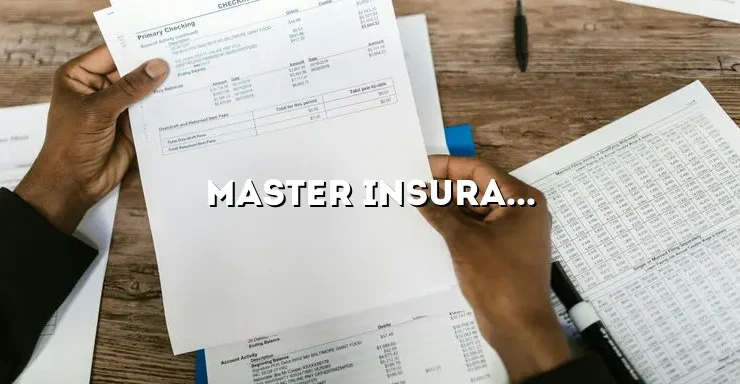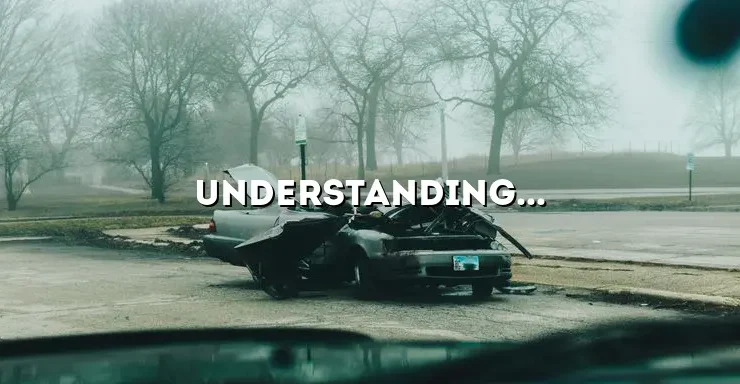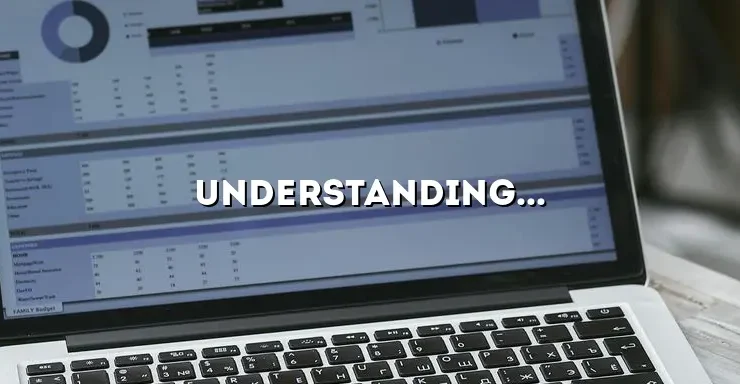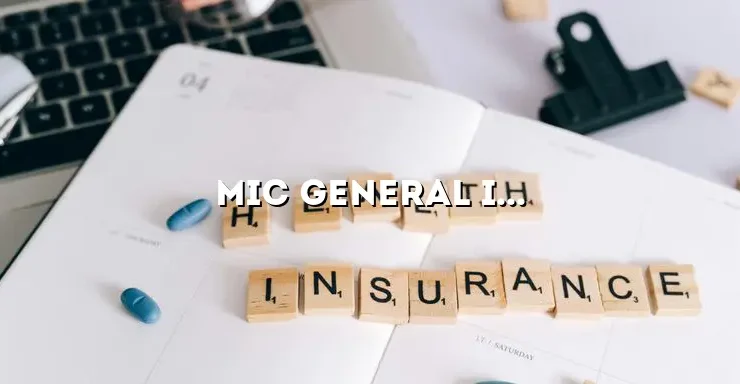
Insurance is a vital aspect of our lives, providing us with financial protection and peace of mind. While many are familiar with standard insurance policies, such as auto or health insurance, there is another type of coverage that is equally important and often overlooked – the master insurance policy. In this comprehensive guide, we will delve into the world of master insurance policies, exploring their purpose, coverage, and benefits.
So, what exactly is a master insurance policy? In simple terms, it is an insurance policy that covers an entire property or community, rather than individual units or homeowners. Typically, master insurance policies are obtained by property owners and associations to protect against common risks and liabilities that may arise within the premises. This type of policy is commonly found in condominiums, cooperatives, and homeowner associations, where multiple units or properties coexist within a single building or community.
Understanding the Basics of a Master Insurance Policy
In this section, we will explore the fundamental concepts of a master insurance policy. We will discuss the different types of master policies available, the coverage they provide, and the specific risks they protect against.
Types of Master Insurance Policies
Master insurance policies come in various forms, each designed to address specific risks and liabilities. One common type is general liability insurance, which provides coverage for bodily injury or property damage that occurs within the property or community. This includes accidents or injuries that may happen on the premises, such as slip and falls or other mishaps.
Another type of master insurance policy is property insurance. This coverage protects the physical structure of the property, including the building itself and its common areas, against perils such as fire, vandalism, or natural disasters. It also covers any personal property owned by the association, such as furniture or equipment.
Directors and officers (D&O) insurance is yet another type of master policy commonly obtained by associations. This coverage protects board members and officers from lawsuits or claims arising from their actions or decisions made on behalf of the association. It provides financial protection in case of allegations of mismanagement, breach of fiduciary duty, or other wrongful acts.
Other specialized types of master insurance policies may include fidelity bond insurance, which guards against employee theft or dishonesty, and umbrella liability insurance, which provides additional liability coverage above the limits of other policies.
Coverage and Exclusions
Master insurance policies offer comprehensive coverage, protecting both the property and the association from various risks. However, it is essential to understand the specific coverage limits and exclusions of your policy.
General liability insurance typically covers bodily injury and property damage caused by accidents or negligence within the property or community. It may also offer protection against medical expenses incurred by injured parties and legal defense costs in case of lawsuits. However, there may be exclusions for intentional acts, pollution, or certain high-risk activities.
Property insurance covers damage or loss to the building and its common areas caused by covered perils, such as fire, theft, or natural disasters. It may also include coverage for personal property owned by the association. However, certain perils, such as earthquakes or floods, may be excluded and require separate coverage.
D&O insurance protects board members and officers from legal claims related to their management or decision-making. It covers legal defense costs, settlements, or judgments. However, it may not cover intentional misconduct or fraud.
Understanding the coverage and exclusions of your master insurance policy is crucial to ensure you have sufficient protection. It is recommended to review the policy carefully and consult with an insurance professional to address any gaps in coverage.
Responsibilities of Unit Owners and Associations
Master insurance policies come with certain responsibilities for both unit owners and associations. Unit owners are typically responsible for maintaining individual unit coverage, known as “walls-in” coverage. This coverage protects the interior fixtures, personal belongings, and any improvements made within the unit.
Associations, on the other hand, have the responsibility to obtain and maintain the master insurance policy for the property or community. They must ensure that the policy adequately covers the common areas, shared structures, and association-owned property. Associations also handle the premium payments and any claims that may arise under the master policy.
Claims Process and Handling
In the unfortunate event of a claim, it is essential to understand the process and steps involved in filing a claim under a master insurance policy. The first step is to notify the insurance company promptly and provide them with all the necessary details of the incident or loss. This includes documenting the damages, gathering any supporting evidence, and filing the claim forms accurately.
Once the claim is filed, the insurance company will assign a claims adjuster to assess the damages and determine the coverage. It is crucial to cooperate fully with the adjuster and provide any requested documentation or information. The adjuster will evaluate the claim, determine the amount payable under the policy, and initiate the settlement process.
In case of disagreement or disputes regarding the claim settlement, it may be necessary to involve legal counsel or seek mediation to resolve the issue. Understanding the claims process and working closely with the insurance company can help ensure a fair and efficient resolution.
Factors Affecting Premiums
Several factors influence the premiums of master insurance policies. Insurance companies consider various risk factors when determining the cost of coverage. Some common factors that can affect premiums include:
Property Value: The value of the property or community being insured plays a significant role in determining the premium. Higher-valued properties may have higher premiums due to the increased financial risk.
Location: The location of the property also affects the premium. Areas prone to natural disasters or with higher crime rates may have higher insurance costs.
Claims History: A history of previous claims or losses within the property or community can impact the premium. Higher claim frequency or severity may result in higher premiums.
Building Materials and Construction: The type of construction and materials used in the building can influence the premium. Buildings constructed with fire-resistant materials or equipped with safety features may have lower premiums.
Deductibles: The deductible amount chosen by the association can affect the premium. Higher deductibles typically result in lower premiums, while lower deductibles may increase the cost of coverage.
Coverage Limits: The selected coverage limits for various perils and liabilities also impact the premium. Higher coverage limits typically lead to higher premiums.
Loss Control Measures: Implementing risk management practices and safety measures within the property or community, such as security systems or fire prevention measures, may help lower premiums.
It is important to understand these factors and work with an insurance professional to evaluate the options and find the most cost-effective coverage for your property or community.
Selecting the Right Master Insurance Policy
Choosing the right master insurance policy for your property or community is crucial. Here are some essential considerations to keep in mind:
Evaluate Coverage Needs: Assess the risks and potential liabilities specific to your property or community. Consider the type of property, its location, and any unique features that may require additional coverage.
Review Policy Options: Compare different insurance providers and policy options. Look for reputable insurers with experience in providing master insurance policies for properties similar to yours. Review the coverage details, exclusions, and endorsements offered.
Work with an Insurance Professional: Seek guidance from insurance professionals or brokers specializing in property insurance. They can help navigate the complexities of master insurance policies, provide expert advice, and assist in finding the most suitable coverage for your needs.
Consider Additional Coverage: Assess whether additional coverage, such as earthquake or flood insurance, is necessary based on the property’s location and potential risks.
Review Insurance Costs: Evaluate the premium costs and compare them against the coverage provided. Consider the financial implications and budgetary constraints of the association or property owners.
Read and Understand the Policy: Carefully review the terms, conditions, and exclusions of the policy before making a decision. Seek clarification on any ambiguous or unclear provisions.
Regularly Reassess Coverage: Periodically review and reassess the master insurance policy to ensure it continues to meet the evolving needs of the property or community. Update coverage limits or endorsements as necessary.
By following these guidelines and working closely with insurance professionals, you can make informed decisions and select the most suitable master insurance policy for your property or community.
In conclusion, a master insurance policy is a vital component of safeguarding properties and communities against unexpected losses. By understanding the intricacies of this type of policy, you can ensure you have the necessary coverage to protect your investments and assets. Remember, each property and community is unique, so it is crucial to consult with insurance professionals and experts to tailor a master insurance policy that best suits your specific needs.






